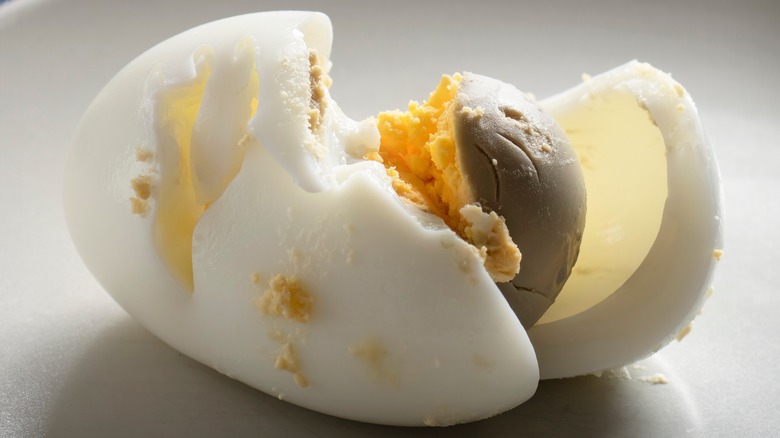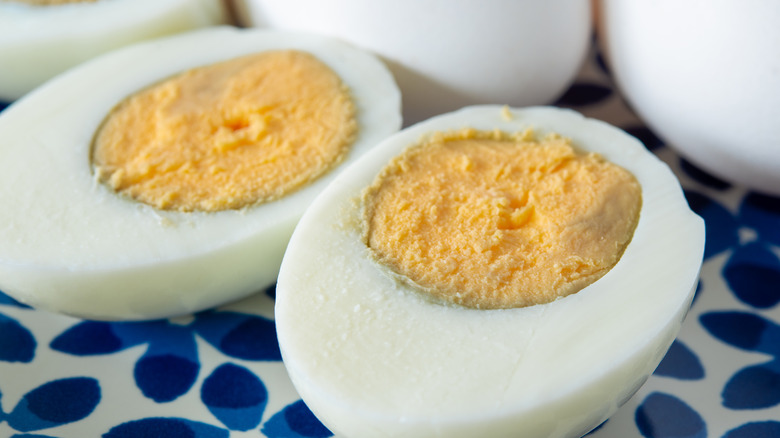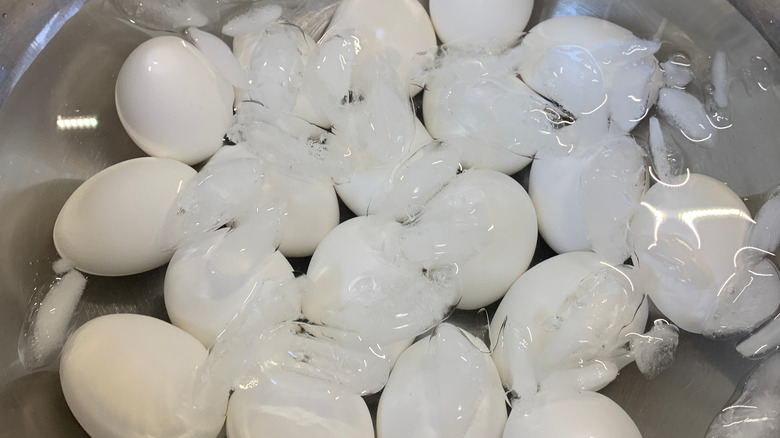Gray Ring Around Your Hard Boiled Egg? Here's Why
As the old saying goes, you eat with your eyes first. In certain circumstances, this phrase becomes all the more resonant. The knowledge of what certain colors mean in the kitchen is one of the most powerful tools in your cooking arsenal. For example, you can assess a sizzling steak's doneness by examining the pinkness of its interior. As a fruit ripens, the gaseous hormone ethylene causes it to change color, via Scientific American.
On the other hand, color can be an excellent indicator that something is off with your food. Most of you are familiar with mold, the multicolored fungal invader that terrorizes forgotten leftovers. But did you know about the pink pineapple disease? This disease is a bacterial infection that causes a pineapple to develop large red splotches, per Advancing the Science of Plant Pathology. Live Science tells us that the black parts of grilled food are carbon deposits, which are generally safe to eat but can be harmful in excess. Sometimes, when you're making breakfast, you may find that part of your boiled egg has taken on an alarming hue.
The infamous gray yolk ring
Successfully peeling a hard-boiled egg is no easy task. Once you've chipped away the brittle shell, the last thing you want to see is an unappetizing gray ring in your egg. The strange stripe appears around the yolk and is sure to deflate your desire for breakfast. Fortunately, there's a scientific explanation for this discoloration phenomenon.
According to BBC Science Focus, a complex chemical interaction between the egg's yolk and white is responsible for the gray ring. Egg white contains a number of different proteins, which are connected by sulfur bonds. When boiled, these bonds begin to break down. This is how your egg cooks from runny to solid, but it also results in hydrogen sulfide being produced. When the newly formed hydrogen sulfide interacts with the iron in an egg yolk to make iron sulfide — it is this chemical compound that causes the space between the yolk and white to turn gray, says BBC Science Focus.
How to avoid gray in your eggs
BBC Science Focus tells us that iron sulfide is formed at around 158 degrees Fahrenheit. Though you'll be toying around with temperatures in that range when cooking an egg, it's possible to minimize the time frame during which your egg is in the iron sulfide danger zone and make the perfect hard-boiled egg.
According to the Los Angeles Times, you can gain better control over the boiling process by starting your eggs in a cold water bath and cooking them while the water heats up. With this method, you remove the eggs from the burner shortly after the water has begun to boil, so they never consistently cook in the temperature range of iron sulfide development. The University of Nebraska-Lincoln explains that you can also halt the cooking process by introducing your eggs to cold water.
However, if you do crack open a hard-boiled egg and find a gray ring, it's still okay to eat, per Mental Floss. Just think of your gray-ringed breakfast as a particularly ugly dyed Easter egg, which is also safe for consumption.


